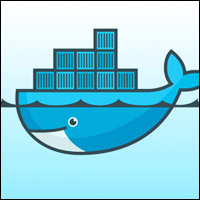
The OpenStack project continues to be something of a lightning rod and also something of a dichotomy in the industry.
On one hand, it has drawn the involvement of hundreds of supporting vendors and more than 17,000 individual members. It ranks highly among priorities, particularly for private clouds, among 451 Research survey respondents.
Yet critics are quick to point out issues: the continued difficulty of installing and implementing OpenStack, the challenges of pushing it to production, and fragmentation — including different vendor objectives and agendas.
Despite its downsides, one thing remains clear: OpenStack is a major concern and focus for large enterprises and service providers today.
Thus, 451 research has updated its coverage of OpenStack with a new report, “The OpenStack Pulse.” It is a sequel to last year’s report, “The OpenStack Tipping Point.”
“The OpenStack Pulse” covers the evolving OpenStack business models that include service providers, product and distribution supporters, cloud management vendors, DevOps players, and PaaS providers. Our report also includes quantitative market-sizing data, regional perspectives, user case studies, and customer-survey feedback.
The State of OpenStack
So, what did researchers find as they delved into the OpenStack ecosystem and market this time? Consistent with earlier observations on open-source software in the enterprise, the use of OpenStack is driven by customer demand for flexibility, modularity, cost-efficiency, and avoidance of proprietary platforms.
Enterprise and service provider users of OpenStack consistently refer to the robust roster of industry leaders supporting the OpenStack Foundation and community momentum as deciding factors in favor of OpenStack.
On the other hand, OpenStack implementations still require a great deal of technical expertise to deploy, and enterprise concerns about matters such as overall reliability, load-balancing, and scalability — particularly for OpenStack’s Neutron networking component — still make use of OpenStack a challenge, and sometimes unappealing to would-be users and customers.
At the same time, there is a significant and growing demand for OpenStack expertise and experience. There is a dearth of talent, and poaching among both vendors and users remains an issue.
One common complaint against OpenStack historically has been that it is vendor-driven rather than pushed by its expanding community of users. However, some evidence that OpenStack is top-of-mind for end users turned up when survey participants mentioned cloud platforms in use or under consideration.
The market leader was overwhelmingly and not surprisingly VMware, which led to current use, pilots, and evaluations, as well as near-term plans and long-term plans. For its part, OpenStack came in second by a good margin in all of these categories, which was more of a surprise than seeing so much VMware. Other cloud platforms that trailed OpenStack in the survey included Citrix, Microsoft, IBM, Amazon Web Services, and CloudStack.
Community Growth
In terms of community, OpenStack has grown not only in numbers but also in maturity and in the way sub-projects are considered and graduated, as well as in the proficiency of users. In general, there has been a more discerning approach and process by the OpenStack Foundation to project graduation, which was needed in response to the growing number of project efforts and vendor interests. There has also been a rise in the number of super users and production uses.
The OpenStack Foundation introduced the concept of the OpenStack “super user” at the Atlanta summit earlier this year. Large users such as Disney and Wells Fargo relayed their challenges and triumphs with OpenStack to conference attendees.
Some large vendors use OpenStack internally but do not necessarily offer OpenStack products or services. They include companies such as Cisco — a Gold-level OpenStack Foundation member that is heavily involved with OpenStack, makes significant contributions to OpenStack, and uses OpenStack for its own operations and support of other products, such as WebEx.
However, Cisco does not offer an OpenStack product beyond support for OpenStack in its Unified Cloud System.
Another example of a vendor deeply involved with OpenStack but without OpenStack-based products or services is Intel, which is also a Gold-level member of the OpenStack Foundation.
In terms of production uses that go beyond proof-of-concept and test and development, OpenStack is still just starting to make its way, but the numbers are increasing. Larger companies beyond Web 2.0, as well as technology startups in retail, travel and other industries, are backing production and consumer-facing services the way Cisco leverages OpenStack for WebEx.
As both vendors and users work to mature OpenStack and make it more enterprise-ready, these production uses likely will continue to grow.
Commercial Growth
Commercially, OpenStack is growing as well, with some significant shifts from primary services to product-based markets and opportunities and the evolution of the different business models around OpenStack.
In the early days of OpenStack, established vendors and startups were focused mainly on providing services to design and build private cloud environments for DevOps approaches that blended development and IT operations for speed, efficiency, and other advantages. As OpenStack has matured, there has been an increase in enterprise adoption and a corollary rise in vendors deploying supported products and managed services.
451 Research is tracking several emerging OpenStack-related business models, including service providers, products, distributions, IT services, cloud management, DevOps, and PaaS providers. Its OpenStack market estimate and forecast were derived using a bottom-up analysis of each vendor’s current revenue generation and growth prospects.
Of the more than 60 companies included in its estimate, eight out of 10 have directly provided revenue guidance. Based on its research, the OpenStack market is still in the early stages of enterprise use and revenue generation, although there are increasing signs of new production deployments of OpenStack.
The 451 Market Monitor service expects total OpenStack-related revenue to exceed US$1.7 billion by 2016. While revenue overwhelmingly comes from the service-provider space, an uptick in revenue is expected from all market segments, especially from the segment of OpenStack products, distributions, and management services that are primarily targeting enterprises.

















































